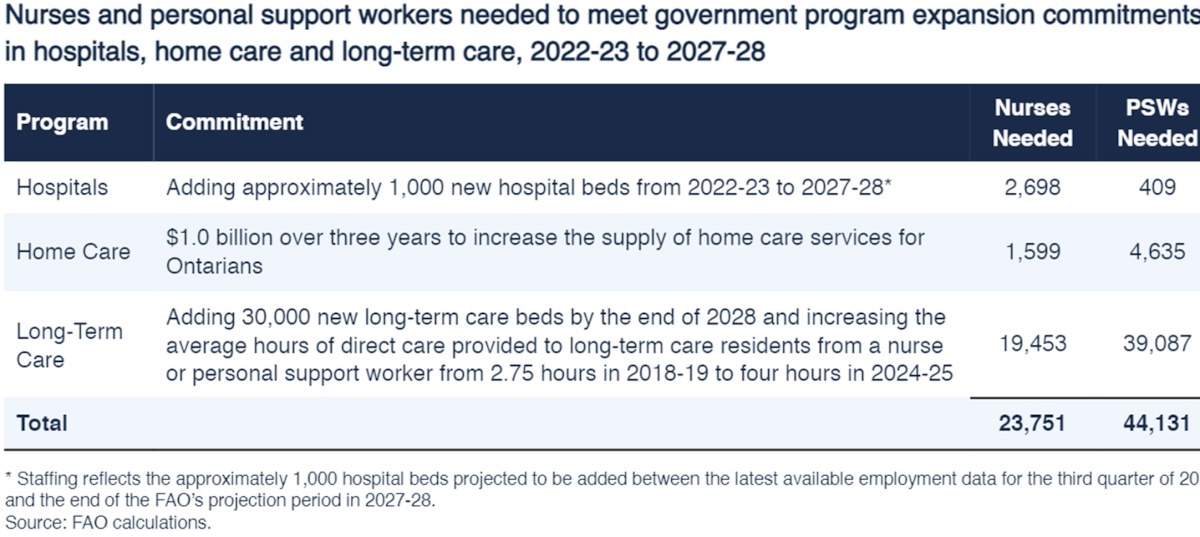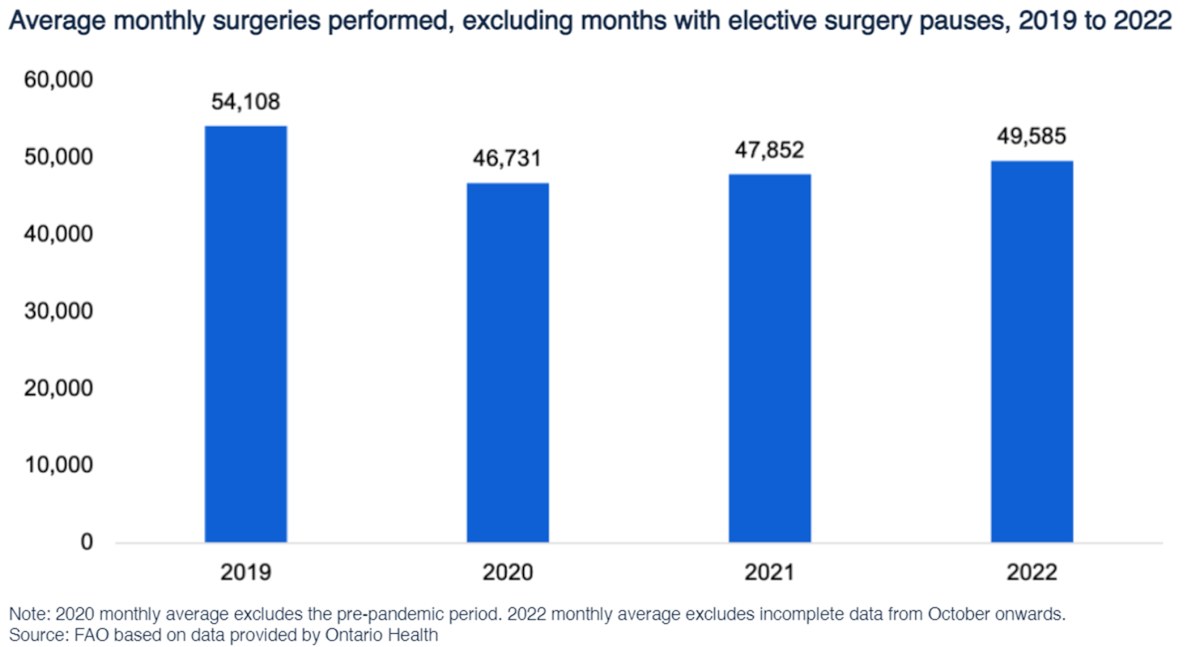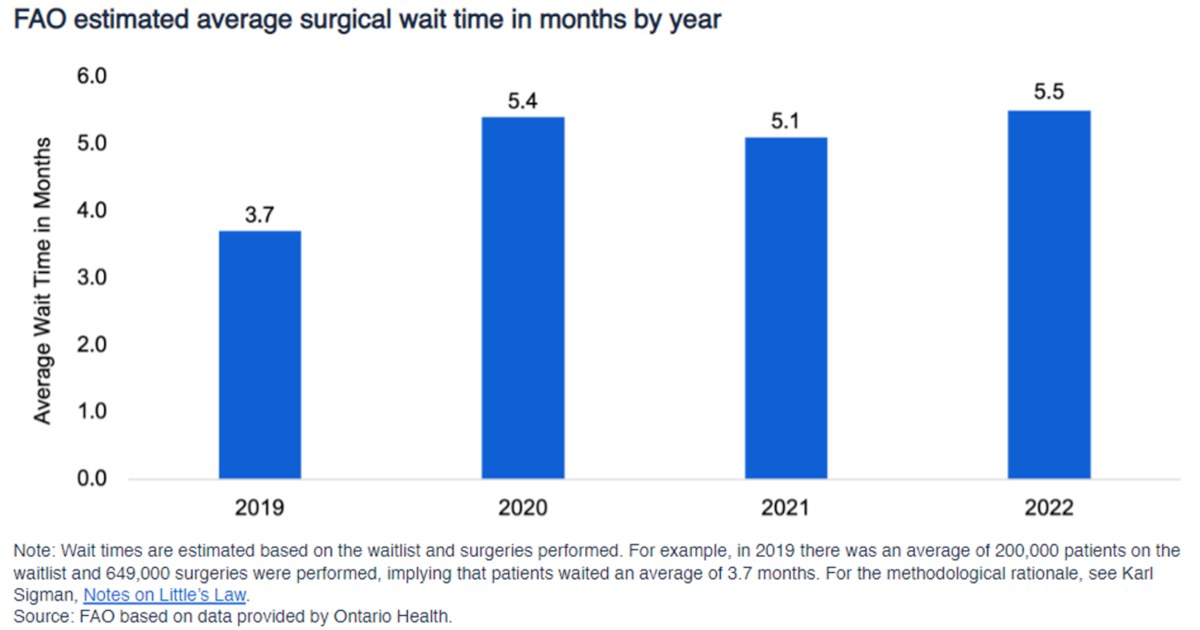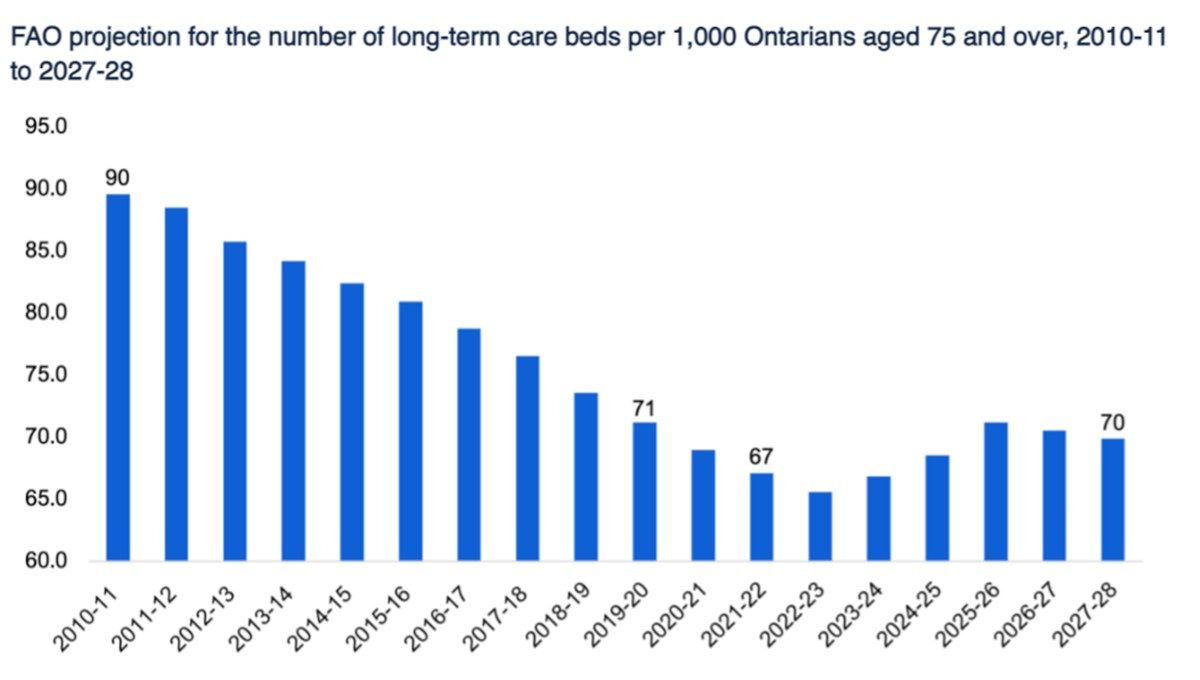Worse Than You Thought: Ontario Hospital and LTC Staffing
By 2027 the PC healthcare funding plan falls $21.3-billion short, their hospital bed plan falls 500 beds short, their plan to free up hospital capacity by moving hospital patents to long-term care is unlikely to work, and their nurse and PSW staffing plan will fall 33,000 short according to the Financial Accountability Office (FAO). Important and appalling news.
But the human problems are actually much worse. The FAO focuses on measuring the gap between the government’s stated plans and the government’s stated aspirations. The bigger – and much more important – problem is that the government aspirations fall so very far short of actual human needs.
So, on staffing, the FAO makes no claim that government aspirations are adequate to human need. Indeed, their staffing projections do “not reflect an assessment about the quality of services that should be provided by these programs.”

As a result, the FAO estimates the government aims to add 1,000 hospital beds between now and 2027 and develops a staffing estimate based on that. But will 1,000 beds actually take care of us? That is less than a 3% increase over 4 years when population growth and aging will push demand up by about 8%. Even now we are at 93% bed occupancy. This is way over safe levels.
For us, this means surgical cancellations, ambulance delays, and unprecedented waits in emergency rooms (ERs), now 30% more than prior to the pandemic, a new high.

The high bed occupancy and the associated long ER waits are happening despite fewer visits to ERs than during the pre-pandemic period. High bed occupancy has occurred despite doing far fewer surgeries than before the pandemic – 4,523 fewer surgeries per month (and that’s for months when surgeries were not actually stopped due to a lack of hospital capacity).
What’s occupancy going to be like if the government gets its act together enough to bring surgeries back to pre-pandemic levels?

We just went through a period when hospitals, including children’s hospitals, had to cancel surgeries when demand outstripped staffing. Surgical wait times in 2022 were 49% longer than 2018/19. Is this an acceptable new normal under the Ford PC government that we must simply live with?

No. Ontario has 33,000 fewer hospital staff than other provinces on a per capita basis, including 16,000 fewer staff for inpatient services. We need to deal with that – but that’s a problem the PCs appear to have no intention of solving.
On funding, the Ford government projects 2.5% annual healthcare increases over the timeframe, clearly inadequate. To meet the modest Ford government aspirations, the FAO puts the needed increase a little higher – 3.6%.

But even pre-COVID estimates of funding needed simply to maintain services were much higher (including the FAO’s). Now healthcare systems have to deal with the burdens of higher population growth, aging, high inflation, COVID, Post COVID (a major new driver of health care needs) and the COVID backlog (107,000 patients are waiting longer than the maximum clinical guidelines for their surgeries, an all time high).
Long-term care is perhaps the one area where the government has made significant promises of improved capacity – but even here their promise of new beds doesn’t adequately deal with a rapidly aging population. LTC Beds for those aged 75 and over will remain less per capita than when the PCs took over, when it was already at a low level.
Transferring hospital patients to LTC is one of the main ways the PCs hope to end hospital hallway healthcare, but with tens of thousands of people on the LTC wait list and a plan to keep the ratio of beds to elders low, they simply will not have enough new capacity to do it. Not unless they deter people who are not (yet) in hospital from accessing LTC – something which they might do, to the great detriment of elders.

These funding projections also assume the government will impose its wage suppression law on healthcare workers. That law would reduce real hospital worker wages by over 10%. The FAO reports that we currently have a shortage of about 24,000 nurses and Personal Support Workers and the overall staff shortage will get worse. How is a 10% real wage cut going to help the staff shortage? It won’t – hospital workers pushed by workplace violence, exhaustion, and disrespect are already beyond fed-up.
If we cannot even keep up with current service and staffing levels, we certainly are not going to address the longstanding capacity problems.
Ford was actually elected on a promise in 2018 of eliminating hallway healthcare. Now the FAO reports we have the highest level of hallway “healthcare” ever reported, an average of 1,289 patients every single day. That is a 22% increase compared to 2018/19, the year the Ford government took over – with a promise to end hallway healthcare.
The government provided 93,812 fewer surgeries last year than when they were first elected. That is a very significant loss of hospital capacity. Correcting that failure and bringing hospital operating rooms up to full capacity should be the focus of their work. But instead they are creating a whole bunch of for-profit surgical mini-hospitals. It’s hard to beat that for a waste of resources – and they have already overspent their private clinic budget just nine months into the fiscal year.
Is all this the new normal we simply must put up with? It shouldn’t be. •
This article first published on the Defend Public Healthcare website.





